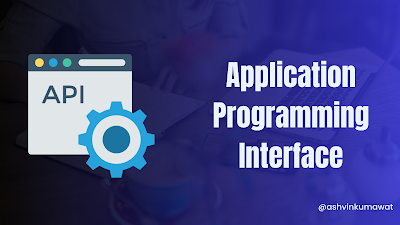Can you imagine How much have you wasted your precious time? if you cannot book tickets online, purchase online, and order food? Did you know how an online payment system works securely? On the Amazon platform, how sellers, payment systems, delivery companies, and customers connect with each other.
Application programming interfaces (APIs) are essential to the functionality of software programs and websites today. With API you can connect a website to another website which helps to automate the company’s operations carefully. The beauty of this structure is that once it’s created and available, you can use it over and over again to make all kinds of amazing things.
This guide will help you learn everything you need to know about API, including
What is an application programming Interface (API) with examples?
How does it work?
How does it help the user or business owner?
Is API secure to use?
As a developer, how would you identify if the API system is working properly before launch?
What is Application Programming Interface (API)?
An API is a set of tools or protocols that allow one computer program to communicate with another. APIs provide a standard way for different software programs on a computer, in the same company or from different companies, to talk to each other and share information. Also, it is a promise to others who want to use your developed software for a specific time. It is a specific language that sends your input to the system and gets a result.
For example, Facebook's API allows developers inside and outside Facebook to create apps that can post content directly onto Facebook.
Another example can take an online ticket-booking website for movies, events, flights, railways, and others. These sites work like a middleman where you can book your ticket in a few steps.
There are 4 different types of APIs
Open API
Partner API
Internal API
Composite API
OpenAPI
An open API is a publicly available software development kit (SDK) that provides software programmers with technical instructions. OpenAPI allows third-party developers to make their applications compatible with proprietary programs or online services.
OpenAPI provides a standard way of documenting the interfaces between software systems. These documents, called API descriptions, enable the machines that connect them to understand how they should be talking to one another automatically.
OpenAPIs are easier to use and less restrictive so third parties can quickly access the data they provide.
OpenAPIs are usually defined in YAML or JSON formats.
It improves the efficiency of developers to accomplish more in minimum time.
Partner APIs
Partner APIs are shared with their partners, those considered business partners by the company that provides the API. Consequently, they are accessible only to clients that are part of the official license arrangement. And partner APIs is more secure than public APIs.
For Example, Google Maps driving directions API is a partner API because it requires an account with Google Maps in order to access the data from their servers. Other well-known partner APIs include Microsoft windows, Twitter's REST API, which allows third-party applications to interact with Twitter services, and Instagram's API for interacting with Instagram content.
Internal API
Internal APIs can only be used by people on the inside of the company and streamline data transfer between the company's departments. Internal developers can use these APIs but external developers can't. This API is completely different from open or partner APIs.
Composite API
Composite APIs are a type of API that combines multiple APIs or systems into one. Basically, it gathers data from different applications or data sources. Alternatively, we can use a composite API to automate different responses. It's cheaper for businesses as they don't have to set up and maintain individual APIs.
For example: In an e-commerce site we can see different services and users are connected with each other. On one platform various sellers, users, banks, payment gateways, and logistics companies are connected with each other.
Check out : How to manage your personal finance
Types of API Architectures
An API is designed to make the process of creating applications faster, easier, and more efficient. There are a number of different types of API architectures that developers can choose from, each with its own pros and cons.
The three most popular types of API architectures are
RESTful APIs,
SOAP APIs,
RPC API
How does API work?
A programming interface is a set of routines, protocols, and tools for building software applications. An API is a type of programming interface that is used to access data or services from an external source.
A web API is typically responsible for communication between a web application and a web server. For example, if a user wants to do something with a web application, he or she first has to tell the application by making an API call. Then, the web application makes an API call to the web server in order to execute the necessary operation. The API is the connection between the application and the web server, and API calls are requests.
Let's take a real-life example, This process is quite similar to restaurant service. You go to the restaurant and you want to order something. So, here waiter is a middleman who tells the chef to make your order. Finally, the waiter delivered your order of food as per your request.
Conclusion
In conclusion, APIs have become an indispensable part of modern software development and web applications. They enable seamless communication between different software programs and websites, allowing for automation and efficient data transfer. APIs provide standard protocols and tools for developers to create applications faster and more efficiently. Understanding the different types of APIs, such as open APIs, partner APIs, internal APIs, and composite API. APIs have revolutionized the way we interact with technology and have made our lives easier and more convenient.
Read also: Retirement Plan which one you need to choose

Comments
Post a Comment